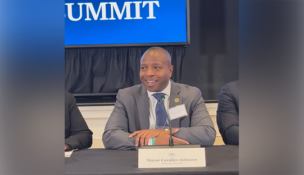Revocation Case Analysis
By: dmc-admin//August 20, 2003//
Although the court declined to decide Russell’s second argument, the court’s dicta suggests that the second supervised release, and a subsequent revocation and reimprisonment would be lawful.
This creates an interesting anomaly, in that sometimes, when a court imposes the maximum imprisonment upon revocation, it will not be able to impose a subsequent term of supervised release, while at other times, it will.
18 U.S.C. 3583(h) provides, “When a term of supervised release is revoked and the defendant is required to serve a term of imprisonment, the court may include a requirement that the defendant be placed on a term of supervised release after imprisonment. The length of such a term of supervised release shall not exceed the term of supervised release authorized by the statute for the offense that resulted in the original term of supervised release, less any term of imprisonment that was imposed upon revocation of supervised release.”
The maximum term of supervised release for a Class A felony is five years (sec. 3583(b)(1)), the same as the maximum term of reimprisonment upon revocation (sec. 3583(e)(3)).
Thus, if a Class A felony defendant receives the maximum after revocation, no additional supervised release can be imposed.
Likewise, the maximum term of supervised release for Class E felonies and misdemeanors is one year (sec. 3583(b)(3)), the same as the maximum term of reimprisonment upon revocation (sec. 3583(e)(3)). Such an offender also cannot be given additional supervised release if he gets the maximum.
However, the maximum term of supervised release for Class B felons is five years, but the maximum term of reimprisonment is three years. This was Russell’s situation, and thus, the two-year supervised release is authorized by the statute, even though he received the maximum reimprisonment.
| |
||
| |
||
For Class C and D felons, the maximum supervised release term is three years, while the maximum reimprisonment term is two. Thus, like Class B felons, even if they receive the maximum reimprisonment, an additional year of supervised release can be imposed after that.
The result is somewhat absurd. A class A felon maxed out at revocation will do his five years, and be done with the sentence forever. A Class B, C, or D, felon, however, can theoretically go back and forth between prison and supervised release for the rest of his life if he keeps violating his conditions of supervised release, and the court keeps giving him the maximum, plus more supervised release.
But a Class E felon, like the Class A felon, will also be free and clear after he does his one year maximum on revocation, and can never go back to prison for that charge.
Arguably, it violates the Equal Protection Clause for the statutory scheme to create a possibility for Class B, C, and D felons to face an endless cycle of maximum reimprisonment and extended supervision, while giving Class A felons closure after just one term of maximum reimprisonment.
Thus, should Russell, or any other defendant in a similar position, get extended supervision revoked for a second time, after receiving the maximum term of reimprisonment for the first, the equal protection argument should be added to any statutory arguments.
– David Ziemer
Click here for Main Story.
David Ziemer can be reached by email.
Legal News
- Some State Bar diversity participants walk away from program
- Wisconsin court issues arrest warrant ‘in error’ for Minocqua Brewing owner
- Iranian nationals charged cyber campaign targeting U.S. Companies
- Facing mostly white juries, are Milwaukee County defendants of color truly judged by their peers?
- Milwaukee Mayor speaks in D.C. Tuesday at White House water summit
- Chicago man sentenced to prison after being caught with ‘Trump Gun’
- FTC bans non-competes
- Gov. Evers seeks applicants for Dane County Circuit Court
- Milwaukee man charged in dismemberment death pleads not guilty
- Democratic-led states lead ban on the book ban
- UW Madison Professor: America’s child care crisis is holding back moms without college degrees
- History made in Trump New York trial opening statements
WLJ People
- Power 30 Personal Injury Attorneys – Russell Nicolet
- Power 30 Personal Injury Attorneys – Benjamin Nicolet
- Power 30 Personal Injury Attorneys – Dustin T. Woehl
- Power 30 Personal Injury Attorneys – Katherine Metzger
- Power 30 Personal Injury Attorneys – Joseph Ryan
- Power 30 Personal Injury Attorneys – James M. Ryan
- Power 30 Personal Injury Attorneys – Dana Wachs
- Power 30 Personal Injury Attorneys – Mark L. Thomsen
- Power 30 Personal Injury Attorneys – Matthew Lein
- Power 30 Personal Injury Attorneys – Jeffrey A. Pitman
- Power 30 Personal Injury Attorneys – William Pemberton
- Power 30 Personal Injury Attorneys – Howard S. Sicula











